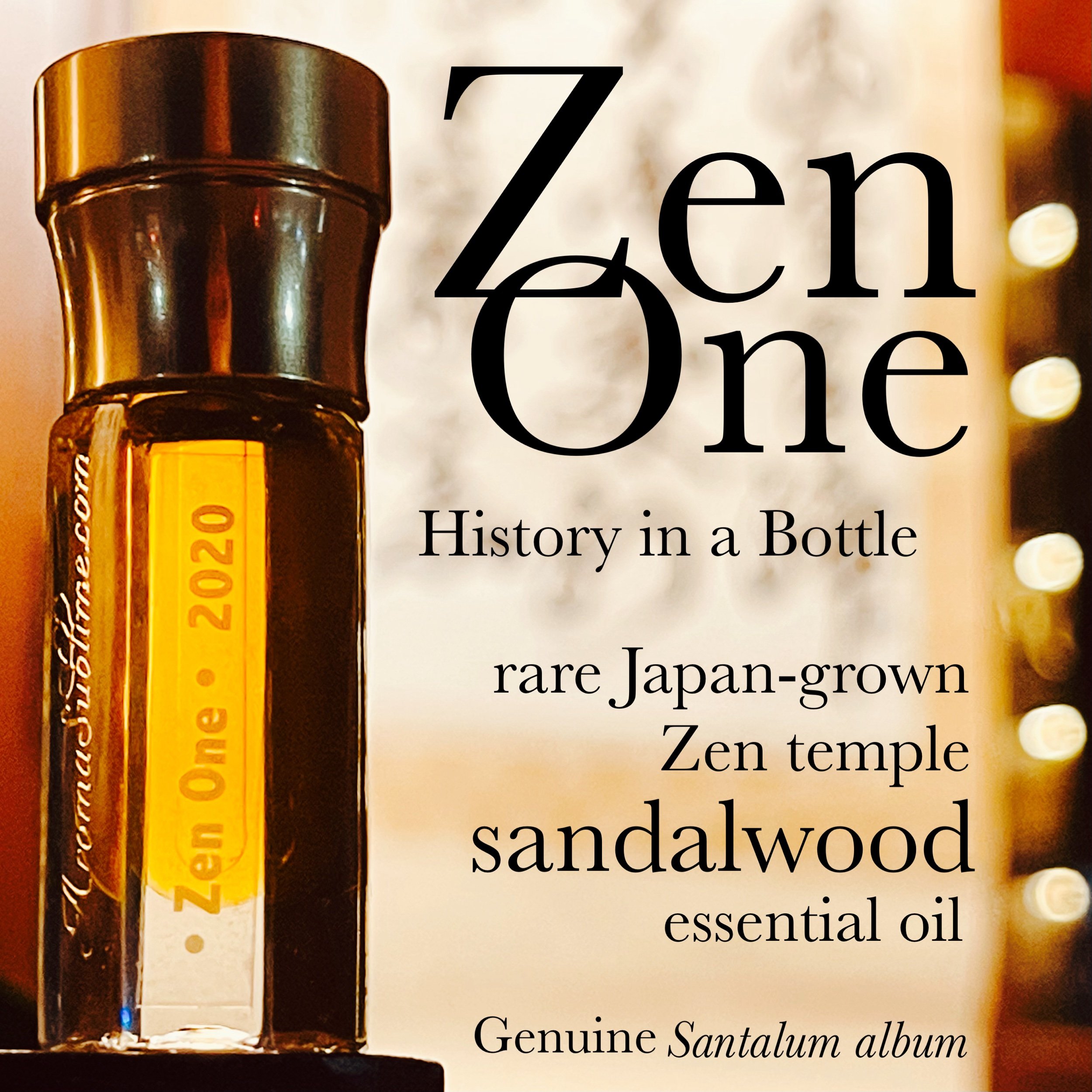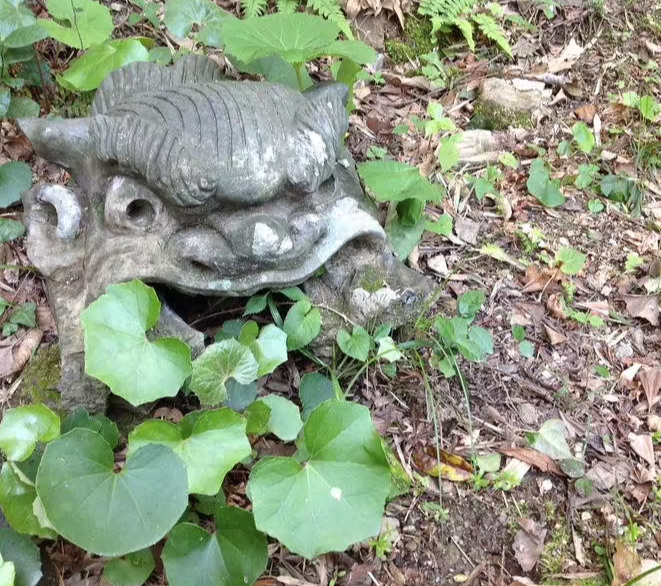Genuine “sacred sandalwood” - The story of “Zen One” - one very special tree!
There’s a lot of talk about “sacred sandalwood”. What makes a sandalwood sacred? This kind of designation is often pretty abstract, but very simply its the very best sandalwood in terms of overall quality and aroma, but also grown and processed in a religious or spiritual setting with careful reverence and attention to detail in every regard. The scent of the final product is the real measure of course. So what is it about the scent of the very best sandalwood that makes us feel its sacred? Why is it considered sacred in so many religions and spiritual traditions around the world? I believe that when a natural substance possesses the properties of providing pleasure, a sense of peace, and real healing of both the body and the mind; it tends to be considered sacred by those who encounter it. The physical healing and psychoactive properties of sandalwood are very well documented. (for now you can explore these in detail with a quick online search, but at later date, we will be providing a complete listing of actual references to studies and scientific articles.) And of course, the very best sandalwood will have greater potency in every aforementioned regard.
We could get technical here and get into the chemistry of what qualifies as genuine sacred sandalwood worthy of the designation. Sure you can absolutely measure what makes a superlative sandalwood oil with chemical analysis, but today I’m just here to tell the story of one very special tree that has all the hallmarks of true and traditional sacred sandalwood. Terroir, growing conditions, age of the tree, provenance, purity, extraction, and ageing.
An incredibly lucky find in the garden of a 600+year-old Zen temple in southern Japan. I have had a personal connection to this temple since 2006 and it has been my “spiritual home” ever since. It is where I first started meditation practice and I have maintained a relationship with them ever since spending more than 2 years of my life there in total.
The tree was a gift. The roots of the tree were failing in the very rocky terrain of the ancient Zen garden in which it grew for more than a century. We know for sure that the tree is over 100 years old because of photos and memories, but the exact age is unknown.
When trees like this are harvested in Japan, already an increasingly rare event, they tend to be made into fine incense as is the culture in Japan, rather than essential oil. What an opportunity to obtain this tree for distillation! Because of the very rocky terrain and thin soil this tree grew in, its growth was challenged and it suffered a dwarfing effect, a stunting of its growth that is known to intensify and concentrate the oil the tree produces.
The first distillation of ZEN ONE was at Aroma Sublime headquarters in Vietnam in January 2020. The simplest approach to make this happen? 10 kilos of the main trunk in my suitcase!
Problem solved. This also ended up being my first solo distillation experience, but with Tony and Tha’s close guidance and mentorship. It was distilled in Tony’s now famous copper custom made still. 8 days later we knew it was all worth it!
About the oil...
ZEN ONE - Japanese Sacred Sandalwood essential oil, Oita prefecture, Kyushu, Japan
A complete description of this oil updated from the product listing in 2025…
ZEN ONE 2020 • 100-year-old Japan-grown Zen temple "Indian Sandalwood" essential oil • Oita, Kyushu, Japan
ZEN ONE Japan-grown “Indian sandalwood” ( Santalum album ) single-tree trunk heartwood essential oil distillation (Jan 2020)
A rare collector-grade superlative sandalwood oil showcasing a very special terroir and little-known sandalwood history and tradition inside Japan. (also see: Zen Heart, another distillation from the roots of the same tree.)
The tree: This singular, more than 100-year-old, Santalum album species (“East Indian sandalwood”) tree was situated in a 600-year-old Zen Temple garden in semitropical Kyushu, southern Japan. Surrounded by Japanese Hinoki (red cedar and giant bamboo forest, as well as yuzu and persimmon trees, all of which contribute to the unique aromatic expression of terroir exhibited through this very special tree.
The history: Sandalwood trees don't grow particularly well in Japan, but there is a history in southern Japan, of Zen temples successfully growing a few trees originally brought from India going back hundreds of years. These rare trees are highly coveted for crafting the finest incense for the Japanese market and is rarely sold outside of Japan. The trees do not grow as tall as they do in a fully tropical climate. Perhaps as a result of the climate challenges, sandalwood trees grown in Japan produce an exceptionally rich, dense, and unique Sandalwood aroma.
• production: January 2020 in-house low-temperature hydro-distillation lasting 8 days in our copper still at Vietnam headquarters by Tony, Tha, and Pierre.
• species: Santalum album
• part used: heartwood of the main trunk, estate-aged outdoors 3 years before distillation.
• scent description: Zen One is dense and intense; clean, spicy and invigorating but without being sharp or camphorous. It’s pure sandalwood glory all the way through, but with some unique features that reflect the very special terroir. The outset features a surprising full medley of peppercorns (you will detect a whole selection of different gourmet peppercorn varieties if you take your time with it.) The citrus note aspect that is common to many good sandalwood oils, here in Zen One is expressed as a more rich and rounded orange marmalade element. You will also notice a prominent sustained cedar note from outset to heart, which then dissippates somewhat towards the finish. All of these unique features are present, while its still also very obviously Santalum album, having the classic creamy aspects and other attributes of “Mysore sandalwood” you would expect in a high-grade Indian sandalwood oil. The finish is big classic “Mysore sandalwood” quintessence, the expressions of terroir dropping away mostly but not entirely, leaving a big bold classic sandalwood impression. This oil has remarkable staying power as the best sandalwood should.
Extensive ageing (Since Jan 2020) has now further improved this oil, harmonizing and rounding its very special aromatic profile.
Growing conditions and influence on aroma: we find it so fascinating, along with so many other Sandalwood aficionados who have experienced this very special essential oil, how much the growing conditions can affect the aroma. The growing conditions in Southern Japan are so radically different from the typical optimum growing conditions for this type of sandalwood, that the tree can really barely survive. Beyond a completely different flora and fauna environment, the most salient influences here might be the relatively wet conditions which sustain for most of the year, as well as a clearly defined winter season that will include occasional short-lived frost and light snow, freezing temperatures which put incredible stress on the tree but do not last long enough to kill the tree. Under the correct growing conditions, this tree would have been be much much taller for its old age. The main trunk of this tree was only about 4m in height, even though the tree was over 100 years old. All of the small branches and leaves would die off during the winter season, making the tree look dead, only to spring back to life in the springtime, with a burst of thin, straight branches and then some new leaves suddenly appearing on the top of the barren trunk.
The cedar note? And finally, regarding the very unusual cedar note in this essential oil, we wonder if it is a direct result the ancient Zen garden being situated in the midst of a massive, primarily Hinoki (Japanese red cedar), forest? When eventually removing the stump and roots of this sandalwood tree for the production of Zen Heart, the second distillation from this tree, we found the roots completely intertwined with those of the surrounding old-growth cedar trees. Is the prominent cedar note in this essential oil a result of direct interaction with these cedar trees? Or is it something more general, like the soil quality as a whole? We can't be sure, but it's something that we like to wonder about.
Company founder Tony Bolton said, while we were distilling this oil, “I really think this is a once-in-a-lifetime tree, and once-in-a-lifetime oil.”
Don’t miss this absolutely epic and rare collectors’ quality sandalwood oil and an opportunity not to be missed. Once it's gone, it's gone.
Read the extended article and get the full story on this very special tree.
• notes of controversy: none (but it should be noted that this is not a typical straightforward sandalwood)







